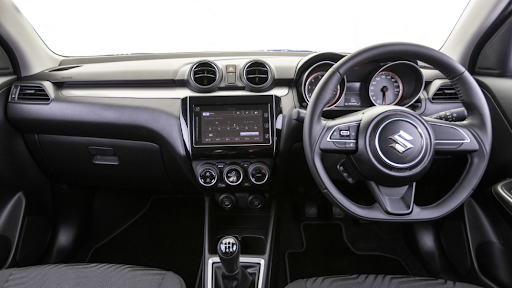City grime or country dust – it really does not matter as both are attracted to your car like a moth to light, dulling the showroom shine and potentially including pollutants that could cause permanent paintwork damage, besides simply making your pride and joy look grubby.
The best way to clean your car is by hand. No automatic car wash will do the same and some owners even find the car wash process to be quite therapeutic, allowing them time to ‘chill’ and destress. It can even be turned into a family event with the kids joining in.
To do the job properly, there is a process and it requires the right products. It is worth a visit to your local spares shop or multi-store to get a car cleaning kit that will include well-known brand products specifically designed for the job and which will not do any damage to paint or plastics.
Preparation
Remove all jewellery before starting and preferably do not wear clothes requiring a belt with a buckle.
Generally, you can wash a car anywhere that has access to some water. It is helpful to get your supplies and tools set up ahead of time so you can clean the car quickly before the soap dries.
- Park the car in a shady spot. Keeping it out of direct sunlight will prevent the water/soap from drying too soon.
- Set up the cleaning materials so you have everything in place before you begin.
- Fill two buckets full of water.one with soap & water and one with water only. Make sure you have a dirt grid at the bottom to keep contaminants out. Add a DECENT car wash soap.
Simply hosing off your car will remove some of the loose dirt or grime but it will not clear it all. Also, when that water dries, you will end up with unsightly streaks.
Washing
Gravity is your friend. Wash the cars from top to bottom and try to angle the hose downward to help force the water and whatever dirt it picks up to the ground.
Remember to get inside the wheel arches and the wheels themselves. Finally, give the undercarriage a good rinse as well to remove both the dirt it has picked up from the road and whatever washed down from above.
Now comes the soapy part. . . .
- Divide the car up into sections. It is important to work on separate areas as you wash the car. Once again, start with the upper sections and work your way down.
- Soak the wash mitt or sponge in soapy water. Get the mitt/sponge fully submerged and ensure you check it regularly and remove any solids it may have picked up to avoid scratching the next area you move to.
Side note: This is why the grids at the bottom of the bucket are important. it's hard to sometimes physically see the harmful debris that can scratch your car, in which case you will need to hose off your wash mitt (wash mitt is preferable to a sponge). - Move the soapy mitt/sponge over the surface of the car. Work slowly, allowing the soap and water to remove the dirt. Very little force is usually required.
- Rinse off each section with your second bucket of water. It is important to remove the soap before it has a chance to dry. Otherwise, it can stain the paint.
Bird droppings (NB: should be removed immediately as the acidity in the poop can burn paint), tree sap and bug splatters are typically more difficult to remove than simple dirt and grime. More importantly, they can damage the paint if you are not careful when scrubbing them off, therefore, It is important to pre-soak these areas with a decontaminate, iron out is a good product to spray all over the car to remove contaminants before you start washing. There are also good bug removal sprays to use when doing a pre-soak before washing, that way limited force is used and no damage to paint will occur.
Pure air drying will leave streaks on the paint, so you should remove the excess soap and water quickly in the same rotation you applied the soap. Remember to dry inside door panels and body seams as well as under the edges of the vehicle, Use multiple drying towels (such as a waffle weave towel) for different parts of the car ie. one towel for the body, and another towel for the bottom sills, wheels, inside door panels, etc.
Polishing
- It's best to use a machine polisher as this is more effective and quicker, be careful to not stay on one spot too long as you can burn your paint. If you can not afford a machine polisher then polishing by hand with the proper pads and cloths will be suitable as well.
- Do not apply to the whole car as the early application areas could dry hard enough to need another soapy rinse. Apply polish and allow it to dry and remove immediately, while watching the showroom glow returning.
Tips
- A good glass cleaner and microfibre cloth can also take care of the windows. Make sure you do not use a typical window cleaner, as this may contain ammonia that can damage rubbers and plastics.
- Do not use dishwashing detergent or other household cleaners to wash your car. They are not intended to interact with paint and may strip it of its protective clear coat. Use car wash products, which are milder.
- Proper tyre gel applied lightly to the sidewalls of the tyres gives a final touch for a good looking car.
Want to get the latest on road-tripping, car care, auto advice, and more? Sign up for all the info you didn’t know you needed!



